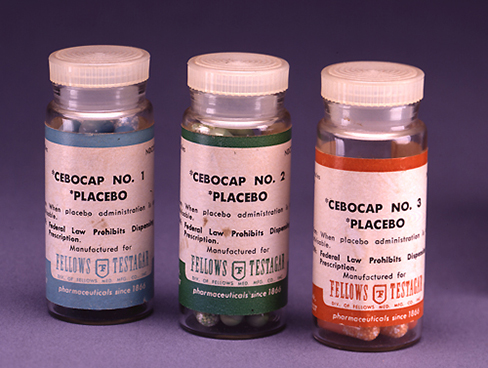The Experimental Process
Continuing with our example of studying how students respond to a new learning program, once we have operationalized the variables and decided on the population (fourth graders), the next step of the experimental process is to split the participants into experimental and control groups through random assignment.
random assignment
Random assignment means that all participants have an equal chance of being assigned to any of the experimental conditions. For example, statistical software can randomly assign each of the fourth graders in the sample to either the experimental or the control group.
Random assignment is critical for sound experimental design. With sufficiently large samples, random assignment makes it unlikely that there are systematic differences between the groups. So, for instance, it would be improbable that we would get one group composed entirely of males, a given ethnic identity, or a given religious ideology. This is important because if the groups were already categorized before the experiment began, we would not know the origin of any differences we find between the groups: Were the differences preexisting, or were they caused by manipulation of the independent variable? Random assignment allows us to assume that any differences observed between experimental and control groups result from the manipulation of the independent variable.
Experimenting Without Bias
Next we need to establish how we will run our experiment. In this case, we might have participants spend 45 minutes learning algebra (either through a computer program or with an in-person math teacher) and then give them a test on the material covered during the 45 minutes. Ideally, the people who score the tests are unaware of who was assigned to the experimental or control group, in order to control for bias.
experimenter bias
Experimenter bias refers to the possibility that a researcher’s expectations might skew the results of the study. Remember, conducting an experiment requires a lot of planning, and the people involved in the research project have a vested interest in supporting their hypotheses.
single-blind and double-blind studies
The example study that assigned students to learn algebra either with a teacher or software is an example of a single-blind study, meaning that one of the groups (the participants) are unaware as to which group they are in (experiment or control group) while the researcher who developed the experiment knows which participants are in each group.
In a double-blind study, both the researchers and the participants are blind to group assignments. Why would a researcher want to run a study where no one knows who is in which group? Because by doing so, we can control for both experimenter and participant expectations. In this case, another person or a third party secretly keeps track of the status of each participant and will reveal who was in each group after the data is collected.
If you are familiar with the phrase placebo effect, you already have some idea as to why this is an important consideration.
placebo effect
The placebo effect occurs when people’s expectations or beliefs influence or determine their experience in a given situation. In other words, simply expecting something to happen can actually make it happen.

Placebos
The placebo effect is commonly explained using medicine as an example. Imagine that you work in a pharmaceutical company, and you think you have a new drug that is effective in treating depression. To demonstrate that your medication is effective, you run an experiment with two groups: the experimental group receives the medication, and the control group does not. But you don’t want participants to know whether they received the drug or not. Why is that? Imagine that you are a participant in this study, and you have just taken a pill that you think will improve your mood. Because you expect the pill to have an effect, you might feel better simply because you took the pill and not because of any drug actually contained in the pill—this is the placebo effect.
To make sure that any effects on mood are due to the drug and not due to expectations, the control group receives a placebo (in this case a sugar pill). Now everyone gets a pill, and once again neither the researcher nor the experimental participants know who got the drug and who got the sugar pill. Any differences in mood between the experimental and control groups can now be attributed to the drug itself rather than to experimenter bias or participant expectations.